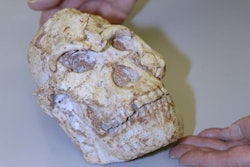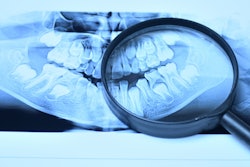
Incisor teeth grow quickly in the early stages of the second trimester of a baby's development, while molars grow at a slower rate in the third trimester, according to a study in the American Journal of Physical Anthropology (November 11, 2014).
Study author Patrick Mahoney, PhD, from the University of Kent in the U.K., looked at histological thin sections prepared from 125 deciduous teeth (included 92 maxillary and 53 mandibular teeth) obtained from England and Sweden.
His research aims to increase the understanding of weaning in our ancestors and could also help dentists, as dental problems do not register in all teeth in the same way. Enamel cells deposit new tissue at different times and different rates, depending on the tooth type.
Mahoney calculated the prenatal formation rate of crown enamel thickness and height in human deciduous maxillary incisors, canines, and molars to explore whether the pace of prenatal enamel growth accelerated for deciduous maxillary central incisors relative to the other tooth types to accommodate the start of mixed feeding.
The English samples included central and lateral incisors, canines, and first and second molars from the recent medieval period in Canterbury, U.K., which were be used to calculate initiation times, daily enamel secretion rates, and extension rates.
The Swedish samples included second molars from routine anonymous clinical extractions provided by the department of pediatric dentistry at the University of Gothenburg, and they were used to supplement the initiation times and extension rates.
Mahoney's analyses showed that central incisors initiate early in the second trimester with significantly faster secretion rates relative to canines and second molars, which initiate closer to birth. This is so incisors are ready to erupt at approximately six months of age, when a baby makes the transition from breast-feeding to weaning.
If the trajectory of enamel growth changes in utero, it contributes a "fundamental understanding of the prenatal enamel growth curve for human biologists," he wrote. "Data presented here are critical for clearly evaluating differences between extant and fossil species, especially for deciduous extension rates, which are poorly understood."
Weaning in humans takes place relatively early compared with some primates, such as chimpanzees. As a result, there is less time available for human incisors to form, so the enamel grows rapidly to compensate.
Exactly when early weaning in humans first began is a hotly debated topic among anthropologists. Current approaches rely on finding fossil skulls with teeth that are still erupting -- which is rare, according to Mahoney.
“The incisor prenatal 'fast track' produces a greater proportion of the crown before birth than all other tooth types.”
Anthropologists will now be able to explore the start of weaning in an entirely new way because "milk teeth" preserve a record of prenatal enamel growth after they have erupted and for millennia after death.
Studies of permanent teeth have demonstrated that the timing of first molar eruption is correlated with a number of life history traits across the primate order, and age at first molar eruption has, therefore, been used to infer some aspects of life history in fossil hominoids, Mahoney wrote.
However, the relationship between first molar eruption and weaning age has recently been re-examined in humans, he added. In addition to the main research question, this is the first histological study to relate human enamel secretion and extension rates to developmental trimesters, he noted.
"Even though initial extension rates were correlated with crown height and scaled with positive allometry within each tooth class, the relatively short incisors still increased in height at a significantly faster rate than the taller canines and molars," Mahoney wrote. "The incisor prenatal 'fast track' produces a greater proportion of the crown before birth than all other tooth types."
"This growth mechanism likely facilitates early incisor eruption at a time when the mixed feeding of infants can be initiated as part of the weaning process," he added.
This study can provide a basis from which to explore new links between developmental trends along the tooth row and life history variables in primates, Mahoney noted.
Future studies might explore links between life history events and variation in enamel secretion and extension rates along the tooth row among our nearest relatives within the primate order, he concluded.
The research was funded by a Royal Society equipment grant and was conducted by Mahoney from the Human Osteology Research Lab in the University of Kent School of Anthropology and Conservation.



















